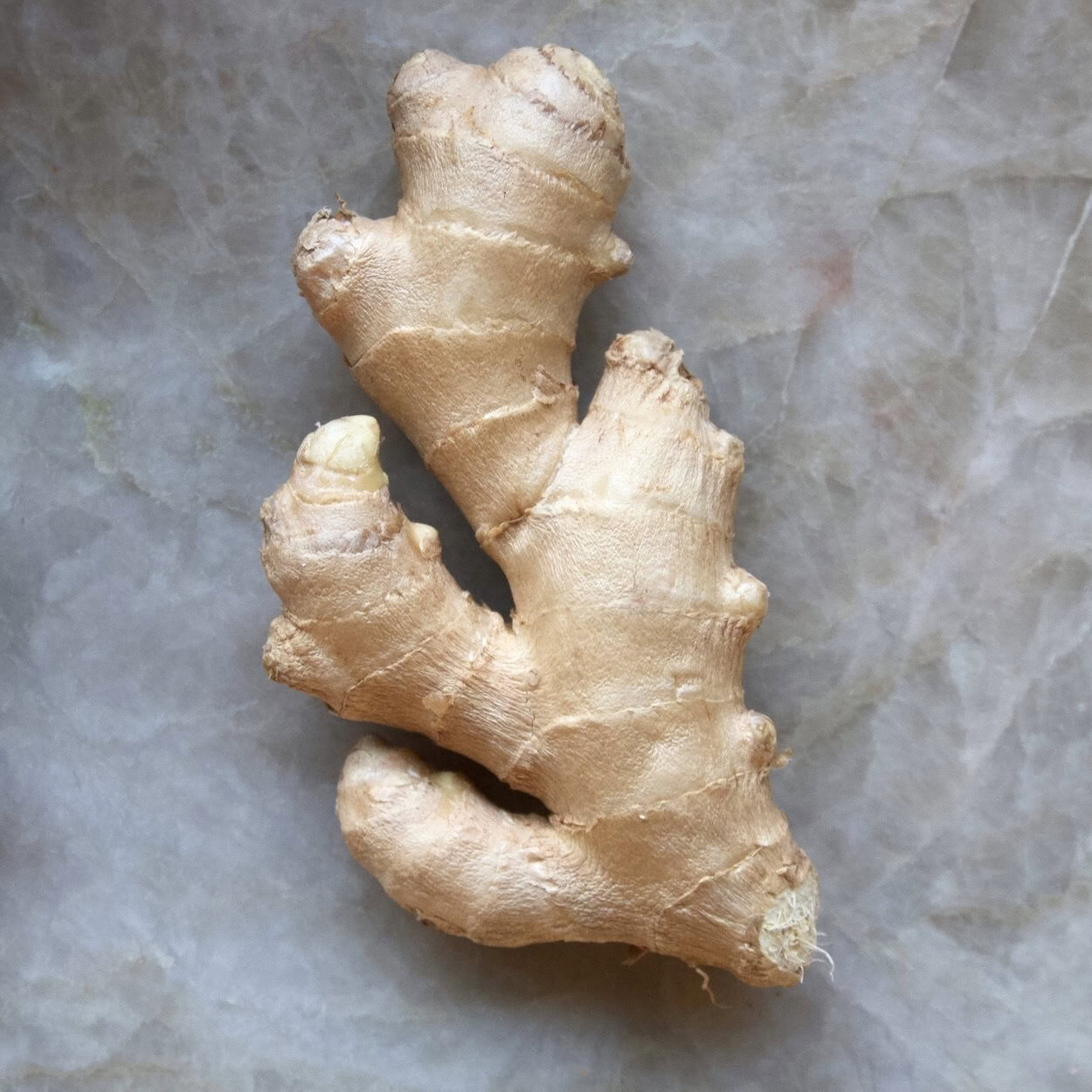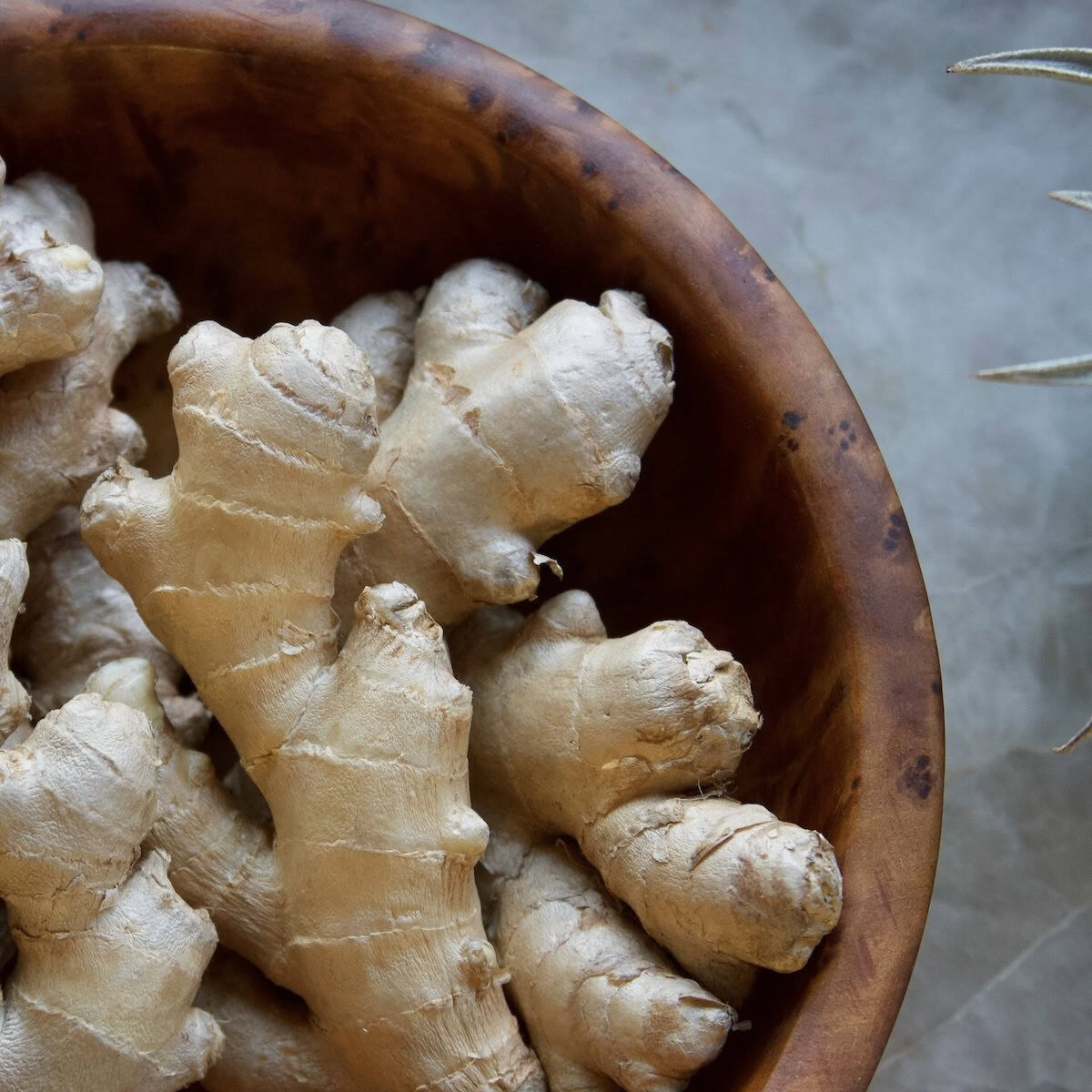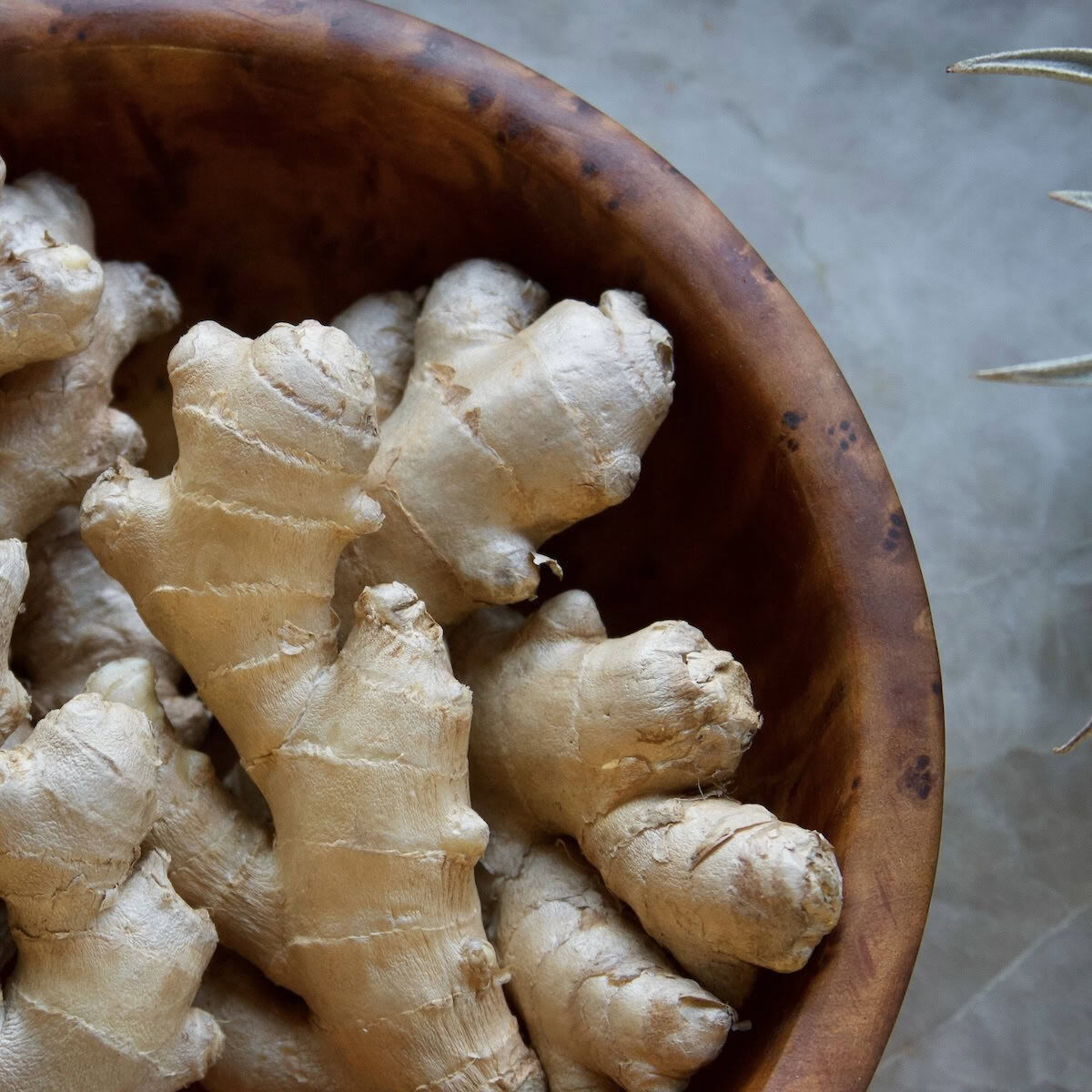Ginger
Ginger is the spice produced from the rhizomes of Zingiber officinale, a tropical perennial herb in the ginger family.

REGION OF ORIGIN
Ginger is believed to have originated in Maritime Southeast Asia, encompassing present-day Malaysia, Indonesia, and the Philippines. It was likely first domesticated by the Austronesian peoples, who spread it across the Indo-Pacific on their ancient seafaring migrations.
PART & COLOR
Ginger rhizomes are knobby underground stem structures. Their rough outer skin ranges from light beige to dark brown, depending on the variety and age. The flesh within is a light yellow, with some varieties displaying subtle pinks and blues. Ginger powder is a paler yellow, somewhat tan color. It comes in other forms too: pastes and extracts, candied and pickled!
HARVEST
Zingiber officinale thrives in tropical and subtropical climates. It is typically planted at the start of the rainy season to ensure ample water supply. Ginger rhizomes develop over a period of 8 to 10 months, reaching full maturity when the leafy tops of the plant begin to yellow. The entire plant is then carefully dug up, and the rhizomes are separated, cleaned and processed to either be sold fresh or as a dried powder.

FLAVOR & AROMA PROFILE
Ginger has a warm and slightly sweet aroma with a distinctly invigorating pungency. The fresh rhizome releases a bright, citrusy scent with hints of lemon and lime, intermingling with an earthy, peppery undertone. Fresh ginger is bright and zesty, juicy and floral. The initial taste is slightly spicy, followed by sweet citrus notes. The warmth lingers for a while, spreading throughout the mouth. The aftertaste, a refreshing and clean finish, is the reason why it's commonly used as a palate cleanser—most notably in the form of pickled ginger (gari) in Japan, which resets the taste buds in between flights of sushi.
Fresh ginger offers the most vibrant and nuanced flavor profile. When cooked, ginger mellows, developing a deeper robustness while retaining its signature spice. Dried ginger powder is more concentrated and earthy with a muted heat. The variation in flavor between fresh and dried ginger allows the spice to compliment a wide spectrum of recipes.
CULINARY USES
Whether fresh, dried, powdered, pickled, or candied, ginger does wonders. Its myriad forms all offer unique dimensions to its essence. In Asia, ginger is often found in stir-fries, curries, marinades, and sauces. Its zesty heat and earthy notes add complexity to the green curries of Thailand, Kung Pao chicken from China, and Japanese ginger salad. It's also a key ingredient in Japanese pickling, lending a tangy kick to vegetables and fruits alike. In Indian cuisine, ginger is commonly paired with garlic to create a flavorful base for many curry, lentil, and masala recipes. In the Caribbean, it spices up one of the most succulent dishes on Earth, jerk chicken. In North America and Europe, ginger is the star of festive baked goods like gingerbread cookies and cakes.
And we mustn't forget drinks! You've likely enjoyed a ginger ale, ginger beer, Moscow Mule, or ginger lemon tea—not to mention its pivotal role in chai. So as you grate fresh ginger or sprinkle its powder, take a moment to give it some love.



